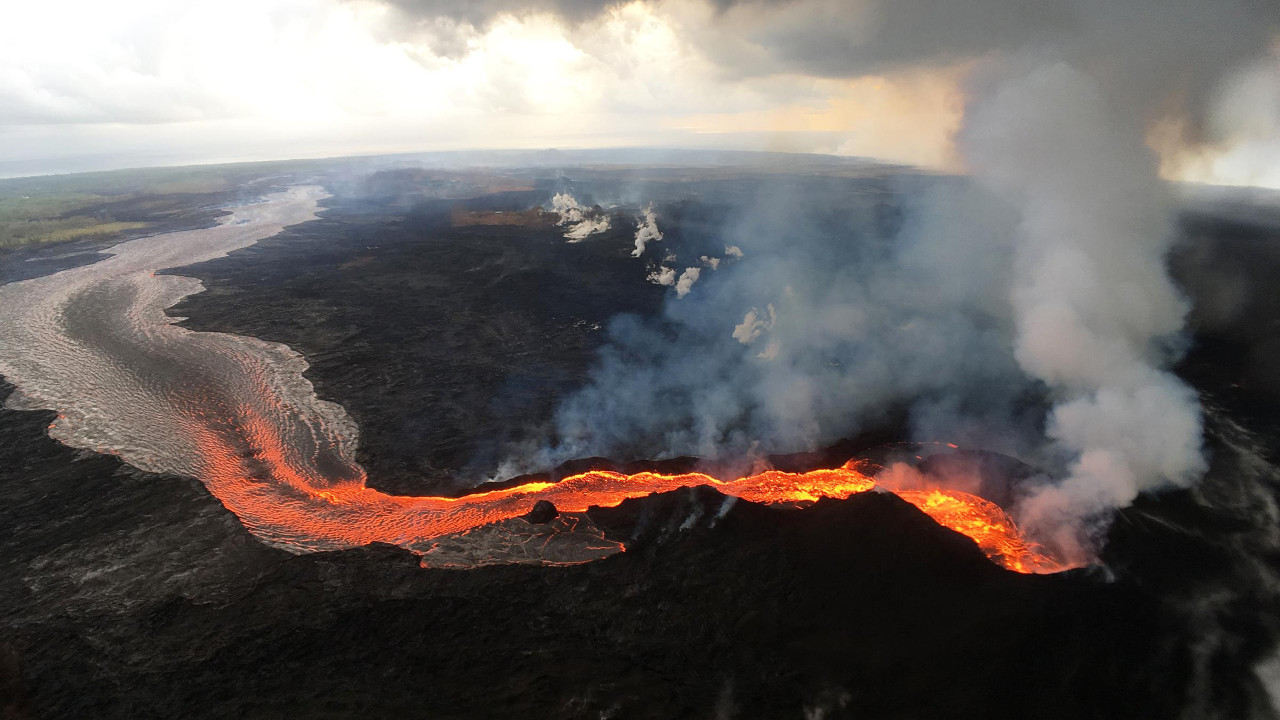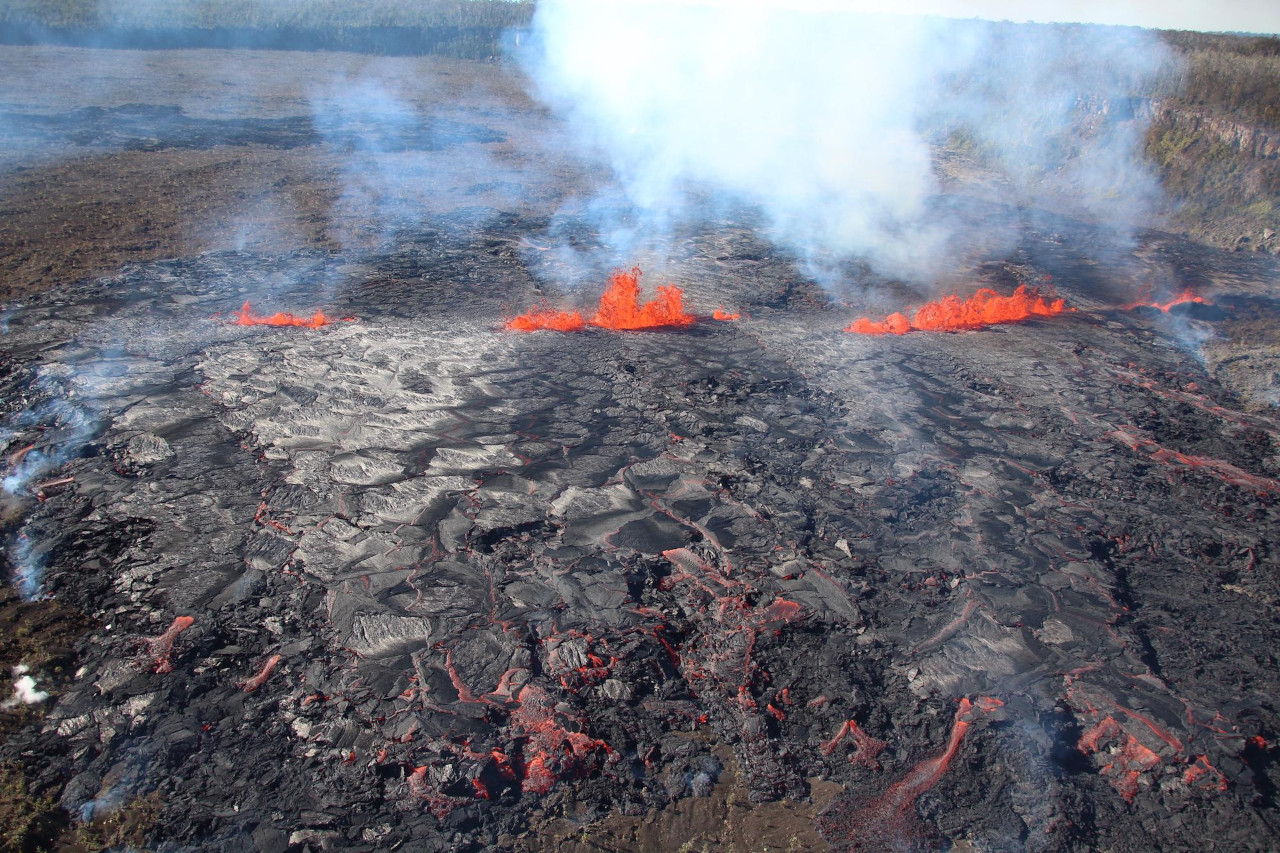(BIVN) – Researchers have uncovered new findings about the patterns of activity at Kīlauea, after examining 120 years of data from, the Hawaiʻi island volcano.
The University of Hawai‘i at Mānoa Department of Earth Sciences announced it has uncovered “for the first time, century-spanning patterns of deformation and stress changes,” with particular focus on how the 1975 magnitude-7.7 Kalapana earthquake “significantly altered the region’s state of stress and deformation”.
“Prior to 1975, in the location where the large earthquake originated, there was no evidence of slip, a movement where two rock masses move past each other,” the researchers say.
“This finding suggests that the region was likely frictionally locked and slowly accumulating stress over time leading up to the rupture,” said lead author Lauren Ward Yong, who conducted this study as part of her doctoral dissertation in the UH Mānoa School of Ocean and Earth Science and Technology (SOEST). “Furthermore, we observed that Kīlauea’s south flank, a geologically active region stretching from the volcano’s summit toward the coastline, experienced greater and more complex displacement [surface motion] prior to the Kalapana earthquake than after.”
The study was published in the Journal of Geophysical Research: Solid Earth.
From the University news release:
Yong and co-authors explored both the deformation and stress changes of the volcano from 1898–2018 by analyzing six different datasets. Their analysis encompassed 338,396 earthquake observations and more than 15,000 measurements of surface motion, or displacements, to construct a computational model replicating the observed displacements and stress before, during and after the large 1975 Kalapana earthquake.
“Deciphering Kīlauea’s history deepens our understanding of volcanic and seismic hazards,” said Yong. “It offers critical insights into how stress evolves in volcanic systems, guiding our ability to anticipate and interpret future earthquakes and magmatic events.”
Enhancing hazard preparedness
The study highlights the hazard potential of the décollement, the major fault zone beneath Kīlauea volcano where two rock masses are moving past each other, which continuously drives the volcano southward and poses risks of large earthquakes coupled with complex volcanic activity within the region.
Researchers found the average slip was reduced from 10 centimeters per year before the 1975 earthquake, to 4 centimeters per year afterward. These variations in slip and stress distributions along the décollement point to changes in mechanical properties, such as friction, that influence the region’s seismic and magmatic activity over time.
“Hawai‘i’s communities live alongside active volcanoes and face significant seismic risks,” said Yong. “This research enhances hazard preparedness and reinforces UH’s commitment to advancing science for the safety and well-being of Hawai‘i’s residents and ecosystems by shedding light on past significant events.”
Kīlauea’s history offers invaluable insights into the complex relationships between magmatic processes and earthquake cycles. Building on this foundation, Yong and her team plan to refine their models by delving deeper into key properties of Kīlauea’s structural features, such as friction along fault planes, to improve understanding of how stress changes trigger seismic and magmatic activity.




by Big Island Video News6:56 am
on at
STORY SUMMARY
ISLAND OF HAWAIʻI - University of Hawai‘i researchers have examined 120 years of data, uncovering patterns of deformation and stress changes at Kīlauea.